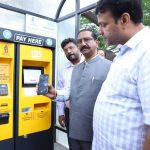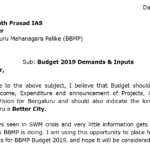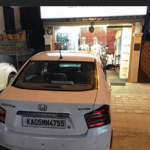A new metro trend to fix systems messing up the city
By NAVANEETHAN SANTHANAM
I recently participated in a hackathon co-organised by the German development agency GIZ and the technology/startup news organisation YourStory. The theme of the hackathon (which they called a ‘techathon’) was ‘Social Good’. It was spread over five events — one each in Goa and Bangalore, two in Hyderabad, followed by a grand finale, also in Hyderabad. It was a competition where the top three teams from each location would qualify for the final.
The theme for Bangalore, from where I participated, was Smart Cities and Connected Mobility. The topics suggested by the organisers included parking management, better mobility options and video analytics for traffic monitoring, among others. After a brief summary about what they were working on, each of us (about 50) was invited to present our idea and pitch it to others to see if they’d want to team up.
By this time, I’d had a few weeks to think about this. My wife, knowing my love for all things urban, had suggested that we present something with the city in focus. I had an idea of turning every city street into a potential revenue generator for the municipal corporation by asking motorists to pay for parking. My rationale was that a large portion of the corporation’s budget goes into building and maintaining roads, and the city deserved a return on its investment. In addition, I’ve always felt that motorists make a misguided assumption that streets are theirs to use as and when they please, with no obligation to pay.
In cities across the globe (both advanced and developing), a key strategy ensuring street health, curbing pollution, and support for pedestrians is the concept of parking demand management. This reduces the demand for parking, rather than constantly having to increase the supply of parking lots and on-street parking. Given the sorry state of parking management across India, this was more than a little ambitious. The plan would have required coordination between city agencies, private contractors, and motorists – a rather daunting task. Still, since I’m probably optimistic bordering on delusional, I went with it.
After we introduced ourselves and pitched our ideas (we weren’t the only ones going after smart parking), I teamed up with another person and managed to come up with a prototype of a smart parking app. After spending an hour or two discussing the broad contours of what we wanted to build, we split up to focus on individual pieces of the app. Around this time, Ashwin Natarajan, a startup founder who had worked with city governments, told us in unequivocal terms to “prepare for a world of pain if you expect the city to do anything”. Perhaps his experiences had made him bitter, but we took this as a cautionary note, and decided instead to focus on building a marketplace for private parking spaces rather than on city streets.
Perhaps this diluted the ‘social good’ angle a bit, but my hope was that we’d at least be able to take cars off the road and free up space for smoother traffic or re-purpose space for other uses (vendors, cycling paths, or more pavements).
Armed with a better-defined vision of what we wanted to accomplish, we set about it with gusto. It was thanks to the generosity of 91springboard that we were able to stay late and work as long we wanted – they provided unlimited food and coffee, and encouraged us to spend the night there if we so wished. Despite the hospitality and encouragement provided, I was surprised to see fewer teams returning to the venue, the following day. Soon, we had a working prototype of SpaceMonk, an app that would allow you to pick your destination, find parking close to it, and also give driving directions to the chosen parking spot. Once you arrived, the app would show walking directions to the destination.
Although this wouldn’t solve the original purpose we started with — of generating revenues for municipalities through parking fees — it would reduce the number of cars on the road, since they’d instead be parking in one of our spots within a building. We’d be able to decongest roads and allow for smoother flow of traffic.
On Sunday, we refined our pitch before the panel of judges, talking about why we believed the app was necessary, and conducted user surveys to understand how many people would be willing to do this, and a presentation about the overall idea. Our research indicated that 80% of respondents would be willing to pay for a secured parking spot, and nearly 70% were willing to let out their spot for vehicle users.
Finally, along with 10 other teams, we presented the idea to the judges, and ended up with a Special Mention and fourth place. We had identified a solution that was easy to deploy: all you’d need is a smartphone and willing users (although this is hardly a guarantee of success!). However, the next steps are more challenging. Many apps that operate in this ‘marketplace’ framework — connecting supply with demand — often require a large amount of cash to incentivise users to get onboard. This is the exact situation that Uber, Ola, Airbnb, and others face. This typically requires an infusion of venture capital and patient investors willing to wait for returns.
The more challenging part lies in getting municipal office holders on board. Solving these two problems is fundamental to getting parking and road utilisation right in our cities at this juncture.
© Oorvani Foundation/Open Media Initiative. Also available online at Citizen Matters



